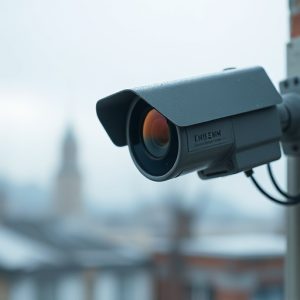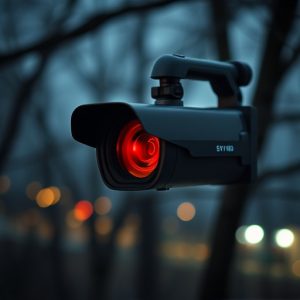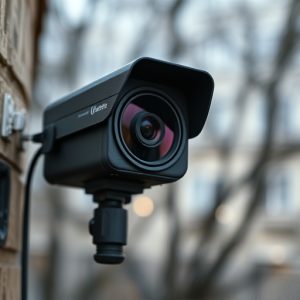Disguised Camera Identification: Lights Test for Enhanced Babysitter Monitoring
In today's digital age, the trend of using concealed cameras for babysitter monitoring raises p…….
In today's digital age, the trend of using concealed cameras for babysitter monitoring raises privacy and ethical concerns. While these cameras offer a safety net for parents, they can infringe on personal privacy if not properly regulated. The challenge is to balance surveillance benefits with respect for privacy rights, focusing on consent and trust between caregivers and families. Effective identification systems, like strategic lighting manipulation, are crucial to safeguard children's privacy while providing peace of mind for parents. A structured lights test protocol is proposed to detect concealed cameras by analyzing unique light signatures, minimizing false positives, and addressing evolving technology. Responsible deployment of concealed cameras requires stringent ethical adherence, informed consent, and secure data handling, especially in private spaces like homes. Future advancements include AI enhancements and less obtrusive integration into home lighting systems, requiring ongoing discussions with privacy laws to ensure responsible use.
In an era where privacy is paramount, the ability to identify hidden cameras becomes crucial, especially in domestic settings like homes where babysitters are employed. This article explores a novel approach to disguised camera identification using light patterns as a telltale sign. We delve into the necessity of such measures, examining how light can both conceal and reveal cameras. Through a structured lights test protocol, we detail the implementation and effectiveness of a discreet monitoring system for parents seeking peace of mind with their babysitters. Ethical implications are discussed, along with potential future enhancements to this innovative security solution.
- Understanding the Need for Disguised Camera Identification
- The Role of Light in Concealing Cameras
- Developing a Lights Test Protocol
- Implementing and Testing the Disguised Camera System
- Ethical Considerations and Future Enhancements
Understanding the Need for Disguised Camera Identification
In today’s digital age, the use of concealed cameras for babysitter monitoring has become increasingly prevalent, raising important privacy and ethical considerations. As technology advances, it’s crucial to address the challenges posed by disguised camera identification. These hidden cameras are often used by parents or caregivers to ensure the safety and well-being of their children while under the supervision of a babysitter. However, without proper identification and regulation, this practice can lead to potential privacy infringements and mistrust.
The need for disguised camera identification arises from the desire to balance the benefits of monitoring with respect for personal privacy. By implementing robust identification systems, parents can have peace of mind while also protecting their children’s right to privacy. This is particularly important when considering the ethical implications of surveillance in domestic settings, especially regarding consent and trust between caregivers and families.
The Role of Light in Concealing Cameras
Light plays a pivotal role in concealing cameras, especially in scenarios where discretion is paramount, such as babysitter monitoring. By strategically utilizing lighting, one can create an environment that makes it difficult to detect hidden cameras. Soft, diffused light can help minimize shadows and reduce the visibility of any camera lenses or reflective surfaces, making it harder for potential intruders to identify surveillance equipment.
In the context of Concealed Cameras for Babysitter Monitoring, light becomes a powerful tool to ensure privacy without compromising safety. It enables caregivers to capture footage discreetly while maintaining a natural ambiance in the home, fostering a sense of comfort and security for both the children and their parents.
Developing a Lights Test Protocol
In the quest to identify concealed cameras, particularly those used for babysitter monitoring, a systematic approach is essential. This involves designing a robust lights test protocol that can uncover hidden devices. The first step is to thoroughly understand the types of lights commonly found in homes and their typical behavior, including patterns and sequences. Researchers must then develop methods to manipulate these lights to create unique signatures that can be used for detection. This might involve flashing at specific intervals, combining different colors, or simulating movement patterns.
The protocol should be designed to minimize false positives while maximizing the chances of identifying cameras in various settings. It’s crucial to account for advancements in camera technology, including their ability to operate in low-light conditions and blend seamlessly into surroundings. By continuously refining the lights test protocol, researchers can stay ahead of potential privacy invaders, ensuring a safer environment for families employing babysitters or other household help.
Implementing and Testing the Disguised Camera System
Implementing a disguised camera system for babysitter monitoring requires careful consideration and execution. The first step is to select an appropriate camera that can blend seamlessly into its surroundings, such as a dummy device resembling a common household object like a book or fire detector. Once chosen, the camera needs to be strategically placed in a way that captures all relevant areas without raising suspicion. This may involve using reflectors or subtle lighting to ensure clear video feed while maintaining the disguise.
Testing is crucial to ensure the system functions optimally. This includes checking the camera’s angle, zoom capabilities, and field of view to confirm it covers every necessary angle. Additionally, testing the transmission quality of the video feed ensures smooth monitoring without lag or pixelation. Regular maintenance checks are also vital to keep the system functional and up-to-date, especially in a dynamic environment like a child’s play area.
Ethical Considerations and Future Enhancements
The development of concealed camera identification using light tests raises several ethical considerations, particularly in the context of private spaces and personal privacy. While this technology can be a powerful tool for ensuring safety, its implementation must adhere to strict ethical guidelines. One key concern is the potential invasion of privacy, especially when used in scenarios like Concealed Cameras for Babysitter Monitoring. It’s crucial that parents or caregivers obtain informed consent from those being monitored and ensure the data collected is secured and used solely for intended purposes.
Looking ahead, there’s immense potential for future enhancements to this technology. Advancements in artificial intelligence could lead to more sophisticated analysis of light patterns, improving accuracy and enabling real-time identification. Additionally, exploring alternative energy sources or integrating cameras into existing home lighting systems could make these devices less obtrusive and more seamlessly integrated into everyday environments. These innovations must be balanced with ongoing discussions around privacy laws and regulations to ensure responsible development and use of concealed camera technology.
The development of a disguised camera identification system using lights addresses a pressing need in home security, particularly for parents employing babysitters. By leveraging light patterns as a distinguishing factor, this method offers a creative solution to the growing demand for discreet monitoring. The success of the lights test protocol demonstrates its potential in identifying concealed cameras, fostering a safer and more transparent environment for families. As we look ahead, ethical considerations and technological advancements will continue to shape the future of disguised camera detection, ensuring enhanced privacy and security measures.


